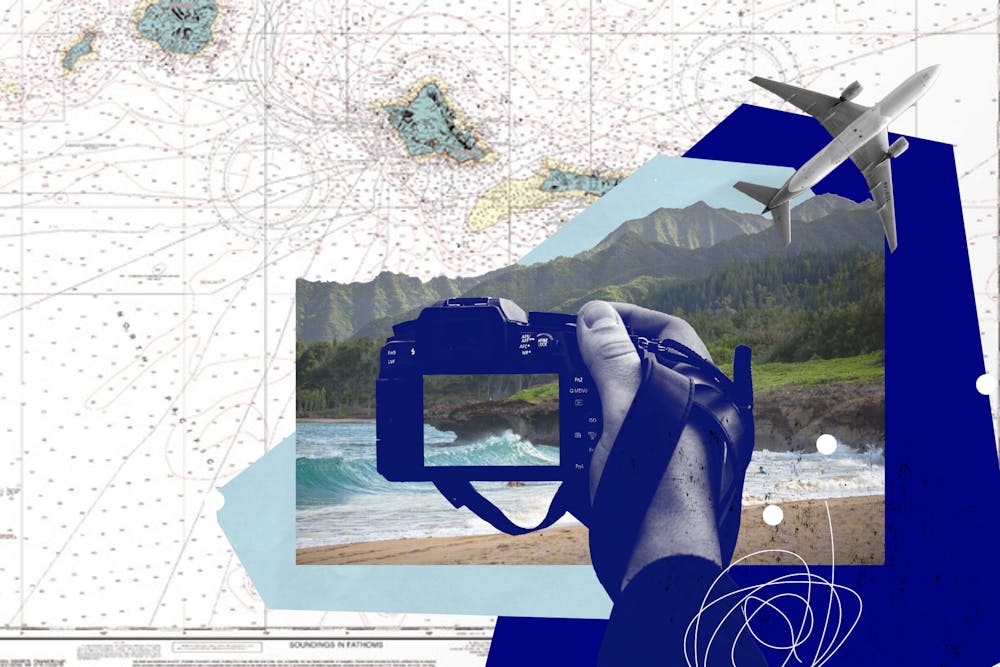As COVID–19 traveling guidelines are increasingly being relaxed or lifted, “coronacations” seem to have returned in full swing. Especially with the upcoming holiday season, many are in the midst of planning their travel itineraries. While vacations during the ongoing pandemic have become more normalized, it is crucial to acknowledge that the effects of unfettered traveling have been devastating for populations that reside in visitor hotspots.
Hawaii in particular has long been characterized as the quintessential 'exotic' and 'tropical' traveling destination, perfect for family trips or summer vacations. This mainstream perception of the island hasn’t changed, even during the height of the pandemic. In fact, many viewed this time period as prime opportunity to take advantage of cheap flight prices and fantasize about the possibility of "isolating" in paradise. Consequently, Hawaiian tourism continued despite increases in COVID–19 cases in May 2020, as well as requests from Gov. David Ige to postpone vacations.
Today, trips to Hawaii may no longer be motivated by a desire to escape the pandemic, but rather, a yearning for life to “go back to normal.” With the introduction of the COVID–19 vaccine in Dec. 2020 and the subsequent relaxing of travel and quarantine guidelines, tourism to Hawaii surged this past summer, as people flocked to the island for their first “post–pandemic” vacation. Over 791,000 tourists traveled to Hawaii this past June, and these tourism numbers are expected to remain high throughout the coming year.

This has had severe consequences for the residents of the island. Multiple studies, including one from the University of Hawaiʻi at Mānoa, found that in Hawaii, the highest rates of COVID–19 cases were among the Native Hawaiian and Pacific Islander (NHPI) population. As of March 2021, the NHPI community represented more than 40% of COVID–19–positive cases on the islands, despite composing only 25% of the state’s population. The lack of adequate health care services for Indigenous communities has only compounded these statistics. Further, not only are Indigenous residents disproportionately affected in COVID–19 cases, they are increasingly being denied basic necessities that are often delegated to out–of–state tourists.
For instance, due to the spread of the COVID–19 Delta variant, which is driving heightened cases in Oahu and Hawaiʻi island, hospitals currently do not have enough isolation facilities for positive patients. Last year, state counties were able to use hotel rooms for designated quarantine facilities, but are now struggling to meet demand, as rooms are increasingly being reserved for visitors and tourists. Just this August, the Queen's Health Systems in Honolulu declared that they had no rooms available for residents that needed to isolate due to COVID–19, spurring an “internal state of emergency.”
Overtourism has also quickly amplified the state’s water shortage. Officials in Maui County recently declared that residents could be fined up to $500 for “using water for irrigation, watering lawns, washing vehicles, or other nonessential activities.” Locals have argued that this punitive system exists at the expense of residents, while resorts and hotels have been allowed to fill their pools for tourist leisure with little consequence.
These harrowing events ultimately reaffirm that the Hawaiian tourism industry cannot be removed from its colonialist roots. The first efforts to create Hawaii’s tourism industry were in 1892 by a group of business owners, some of whom would later be involved in the illegal overthrow of the Hawaiian monarchy and forced annexation of Hawaii as a United States territory. These business owners eventually formed the “Hawaii Promotion Committee,” which received funding from the territorial government to pay for offices and magazine advertisements abroad–an endeavour that proved to be extremely profitable.
Now, Hawaii's tourism industry is often exalted for its ability to rake in billions of dollars in state revenue, but many activists and organizers have explained that these profits don’t “trickle down” to local residents, and are in many ways severely harmful to Hawaii’s people, environment, and culture. Hawaii currently has the highest cost of living in the entire country, while 48% of families with children cannot afford the minimum household budget necessary for housing, transportation, child care, food, and healthcare. Accordingly, nearly two–thirds of residents struggle financially. Heightened tourism has also eroded many of the island’s hiking trails; motivated proposals for real estate development on Native Hawaiian sacred sites in Pololu Valley, a popular tourist destination; and commodified and appropriated Indigenous culture.
At this time, it is crucial to not only acknowledge the harmful impacts of the tourism industry—especially as non–Native Hawaiians—but also to actively divest from it. Hawaii is not an “exotic getaway” or “weekend escape”—it is a home to Indigenous people, who will continue to live on the land long after tourists visit as their latest destination for pandemic escapism.







